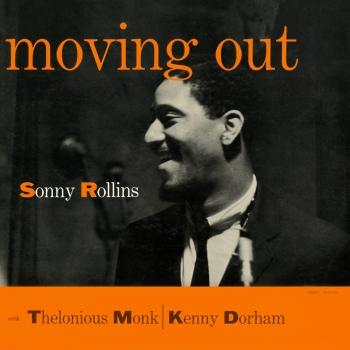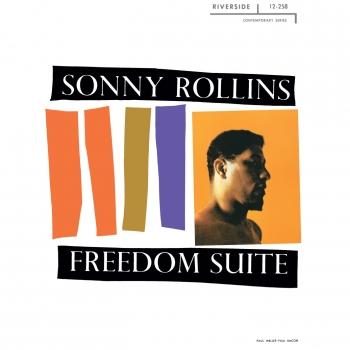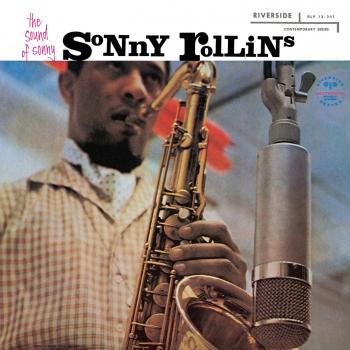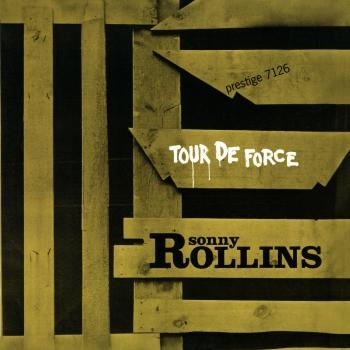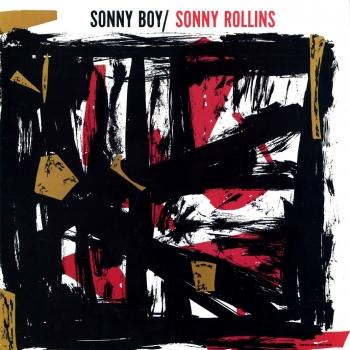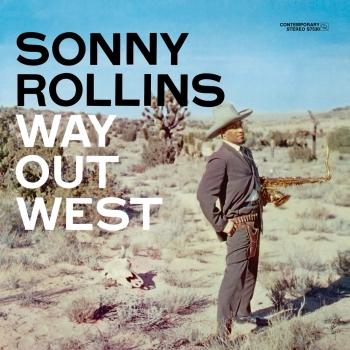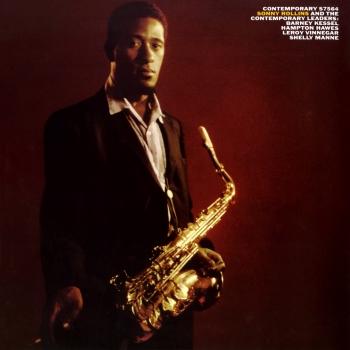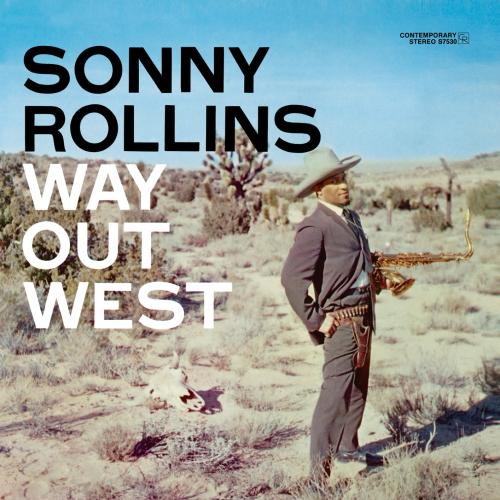
Way Out West (Remastered) Sonny Rollins
Album info
Album-Release:
1957
HRA-Release:
27.01.2017
Album including Album cover Booklet (PDF)
I`m sorry!
Dear HIGHRESAUDIO Visitor,
due to territorial constraints and also different releases dates in each country you currently can`t purchase this album. We are updating our release dates twice a week. So, please feel free to check from time-to-time, if the album is available for your country.
We suggest, that you bookmark the album and use our Short List function.
Thank you for your understanding and patience.
Yours sincerely, HIGHRESAUDIO
- 1 I'm An Old Cowhand 05:43
- 2 Solitude 07:52
- 3 Come, Gone 07:54
- 4 Wagon Wheels 10:13
- 5 There Is No Greater Love 05:17
- 6 Way Out West 06:29
Info for Way Out West (Remastered)
Sonny Rollins was always gifted with a brawny, expressive tone and a formidable sense of swing. But on „Saxophone Colossus“ he conveyed a new-found harmonic confidence and a singular sense of thematic continuity that gave each improvisation a transcendent quality. And his attack, always cutting and direct, took on immense weight and warmth.
For his first trip out to California in March of 1957, Rollins celebrated his boyhood fascination with western imagery by interpreting classic cowpoke tunes. With „Way Out West“, Sonny was no longer simply a gifted sideman, but a consummate tenor saxophonist--ready to stretch out as a leader--and he made the bold decision to dispense entirely with the piano and carry the full harmonic/melodic load in a trio format. This unlikely combination of elements gives „Way Out West“ a special place in jazz history.
The veteran rhythm combo of drummer Shelly Manne and bassist Ray Brown are so clearly inspired by Rollins' youthful exuberance, that they transform the unlikeliest of themes--"I'm An Old Cowhand" and "Wagon Wheels"--into jazz anthems. On two takes of the former, Manne and Brown put you right in the saddle with clanking hooves and campfire counterpoint, and when Sonny yodels his final yippi-yi-yo-ki-yea, they settle into a ravishing medium groove that could swing you...well, until the cows come home. Sonny's ballad mastery is no less compelling, with hypnotic readings of "Solitude" and "There Is No Greater Love." Elsewhere, his jagged line "Come, Gone" launches him and his cohorts into full flight, while the bluesy inverted theme and cunning rhythmic stop-time of the title tune inspires collective interplay and soulful solos from each of these innovators.
"Sonny Rollins's 1957 Way Out West (whose cover features Rollins dressed in a suit, tie, gunbelt and 10-gallon hat against a backdrop of cactuses and cattle bones) is one of the most influential. Hearing it was Courtney Pine's induction into jazz sax, and many others tell the same story." (The Guardian)
"Sonny Rollins’ playing is immediately attractive because of his muscular harmonic conservatism. Where he might have never have licked every scalar corner in existence as Coltrane did, he does always perform at the highest level. Way Out West remains a standard for this higher level." (AllAboutJazz)
"The timeless Way out West established Sonny Rollins as jazz's top tenor saxophonist (at least until John Coltrane surpassed him the following year)." (AMG)
"It seems an unlikely setting for one of the greatest jazz recordings of all time, musically and sonically. But the players were Sonny Rollins and Ray Brown and Shelly Manne, and the engineer was the intuitive genius Roy DuNann." (JazzTimes)
Sonny Rollins, tenor saxophone
Ray Brown, double bass
Shelly Manne, drums
Recorded March 7, 1957 at Contemporary's Studio in Los Angeles
Produced by Lester Koenig
Digitally remastered
Sonny Rollins
will go down in history as not only the single most enduring tenor saxophonist of the bebop and hard bop era, but also the greatest contemporary jazz saxophonist of them all. His fluid and harmonically innovative ideas, effortless manner, and easily identifiable and accessible sound have influenced generations of performers, but have also fueled the notion that mainstream jazz music can be widely enjoyed, recognized, and proliferated. Born Theodore Walter Rollins in New York City on September 7, 1930, he had an older brother who played violin. At age nine he took up piano lessons but discontinued them, took up the alto saxophone in high school, and switched to tenor after high school, doing local engagements. In 1948 he recorded with vocalist Babs Gonzales, then Bud Powell and Fats Navarro, and his first composition, "Audubon," was recorded by J.J. Johnson. Soon thereafter, Rollins made the rounds quickly with groups led by Art Blakey, Tadd Dameron, Chicago drummer Ike Day, and Miles Davis in 1951, followed by his own recordings with Kenny Drew, Kenny Dorham, and Thelonious Monk.
In 1956 Rollins made his biggest move, joining the famous ensemble of Max Roach and Clifford Brown, then formed his own legendary pianoless trio with bassist Wilbur Ware or Donald Bailey and drummer Elvin Jones or Pete La Roca in 1957, doing recorded sessions at the Village Vanguard. Awards came from Down Beat and Playboy magazines, and recordings were done mainly for the Prestige and Riverside labels, but also for Verve, Blue Note, Columbia, and Contemporary Records, all coinciding with the steadily rising star of Rollins. Pivotal albums such as Tenor Madness (with John Coltrane), Saxophone Colossus (with longstanding partner Tommy Flanagan), and Way Out West (with Ray Brown and Shelly Manne), and collaborations with the Modern Jazz Quartet, Clark Terry, and Sonny Clark firmly established Rollins as a bona fide superstar. He also acquired the nickname "Newk" for his facial resemblance to Brooklyn/Los Angeles Dodgers pitcher Don Newcombe.
But between 1959 and 1961 he sought a less superficial, more spiritual path to the rat race society of the times, visiting Japan and India, studying yoga and Zen. He left the music business until 1962, when he returned with the groundbreaking and in many ways revolutionary recording The Bridge with guitarist Jim Hall for the RCA Victor/Bluebird label. Rollins struck up a working relationship with trumpeter Don Cherry; did a handful of innovative LPs for the RCA Victor, MGM/Metro Jazz, and Impulse! labels; did one record with his hero Coleman Hawkins; and left the scene again in 1968. By 1971 he came back with a renewed sense of vigor and pride, and put out a string of successful records for the Milestone label that bridged the gap between the contemporary and fusion jazz of the time, the most memorable being his live date from the 1974 Montreux Jazz Festival, The Cutting Edge. Merging jazz with calypso, light funk, and post-bop, the career of Rollins not only was revived, but thrived from then onward. He was a member of the touring Milestone Jazz Stars in 1978 with McCoy Tyner and Ron Carter, and gained momentum as a touring headliner and festival showstopper.
His finest Milestone recordings of the second half of his career include Easy Living, Don't Stop the Carnival, G-Man, Old Flames, Plus Three, Global Warming, This Is What I Do, and Without a Song: The 9/11 Concert. He has worked extensively with road and recording bands that have included such artists as electric bass guitarist Bob Cranshaw; trombonist Clifton Anderson; pianists Tommy Flanagan and Stephen Scott; keyboardist Mark Soskin; guitarists Bobby Broom and Jerome Harris; percussionist Kimati Dinizulu; and drummers Jack DeJohnette, Perry Wilson, Steve Jordan, and Al Foster. Rollins formed his own record label, Doxy, through which he issued the CD Sonny, Please in 2006. Well into his eighth decade of life, Rollins continued to perform worldwide. As a composer, he will always be known for three memorable melodies that have become standards and well-recognized tunes in the jazz canon -- "Oleo," "Airegin," and especially "St. Thomas." (Michael G. Nastos). Source: Blue Note Records.
Booklet for Way Out West (Remastered)


















